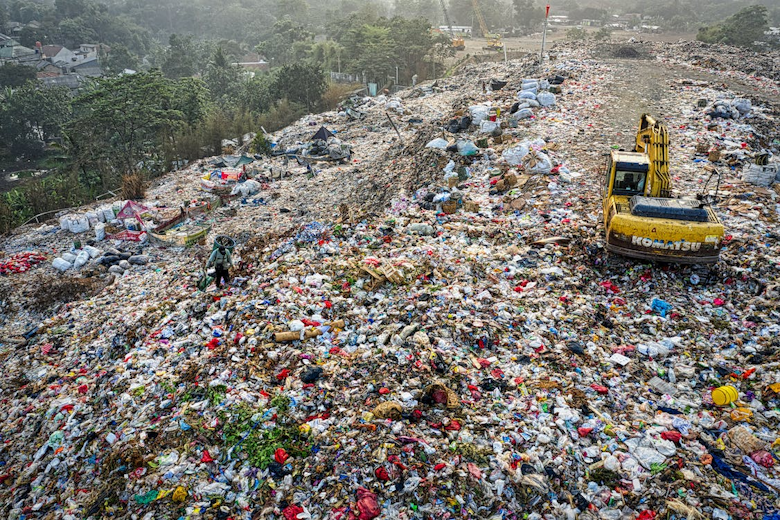How to do a construction site waste management plan

The waste management plan is the document that structures all actions related to construction waste. By developing it before the site, it allows the project to properly prepare for the site monitoring phase. It brings together the waste inventory and the elements allowing their monitoring, procedures and explanatory sheets for workers as well as other useful documents.
What elements should be addressed in the design phase to limit construction waste in New York state
During the design phase, the project team makes strategic choices, making it possible to limit construction waste, on:
- the constructive principles by favoring prefabrication, layout, mechanical assembly rather than glued
- materials by favoring their reusable or recyclable aspects and to a lesser extent by favoring suppliers offering minimal soil pollution
The project can be advised for this by specialized design offices or consultants and use an integrated design process to involve and interact all project stakeholders on this subject. A Life Cycle Cost Analysis also makes it possible to compare the different conceptual options presented to the project. The decision to use an environmental coordinator during the construction phase is also defined in this phase.
The choices made are then transcribed into the requirements program.
What are the points covered in a waste management plan
The waste management plan must be established before the start of construction, by a local waste management company such as Rochester Dumpster Rental Team. It addresses the following points:
- analysis of regulatory obligations
- the environmental permit
An environmental permit must be obtained or an official declaration must be made before putting certain activities or equipment (classified installations) into operation.
Some sites are classified installations, just like waste deposition, storage or treatment installations. Specific procedures must be applied depending on the type of permit.
The rules regarding waste management:
- establishment of a preliminary inventory of waste and materials intended for reuse, generated on site (demolition, new materials used, etc.)
- identification of waste or materials according to EURAL codes
- materials that can be reused (on site or on another site)
- hazardous waste (asbestos, used oils, TL tubes, paint pots, treated wood, batteries, accumulators and transformers)
- other waste to be sorted for recycling
- estimated quantities (measurement)
- production of a procedure to follow for hazardous waste
- define the location of waste storage areas, in particular according to the sorting potential on site (number of containers / type of materials that can be recovered, etc.) and provide containers adapted to the type of waste to be recovered (size, tarpaulin , etc.)
- production of explanatory sheets on the sorting of waste implemented on the site
- establish a waste disposal schedule
- contact resellers who may be interested in certain materials
Who develops and enforces the waste management plan in Rochester
During the preparation of the site and its completion, it is the environmental coordinator or a person from the project team taking over their functions, who ensures the development, then the implementation and monitoring of the waste management plan.
How should I manage my waste during construction
The management of waste and materials intended for reuse is made easier by the fact that this has been the subject of reflection during the design phase and that a waste management plan has been produced upstream of the construction site. The management of waste and materials intended for reuse during the construction site responds to the following elements:
- sort on site: PMC, Paper/cardboard, white and colored glass, plant waste, hazardous waste, including waste electrical and electronic equipment, batteries and used oils
- construction or demolition waste can either be sorted on site or can be transported mixed to an authorized facility for the purpose of sorting it, in order to maximize the fraction of construction waste that can be recycled
- keep a waste register or inventory based on the “preliminary inventory” established before construction
This inventory allows the prior and safe removal of hazardous materials and substances in order to maximize the recycling of waste (particularly inert waste), the traceability of hazardous and non-hazardous waste in previously defined recovery/disposal channels and the administrative monitoring of evacuated waste with collection of slips and treatment certificates to be compiled in the environmental coordinator’s logbook and kept for 5 years.
An exception can be made for the transport of one’s own waste to an accessory collection center or one weighing less than 500kg, it they check that no waste is burned/buried on site s well as check the cleanliness of the site. They must ensure the appropriate storage of waste that could cause pollution of the ground, subsoil and water as well as hazardous waste and properly dispose of effluents from mobile chemical sanitary installations (considered as waste) and under no circumstances discharge them into the sewer. Last but not least they must communicate, raise awareness and train companies and workers working on site.



 So, why is it important for companies to use a good 3rd Party Waste & Recycling Management Firm?
So, why is it important for companies to use a good 3rd Party Waste & Recycling Management Firm?  The
The 


 We should not throw our junk anywhere and anyhow. It is essential to sort them to avoid polluting the environment. Discover one of the key principles of eco-friendly behaviors.
We should not throw our junk anywhere and anyhow. It is essential to sort them to avoid polluting the environment. Discover one of the key principles of eco-friendly behaviors.